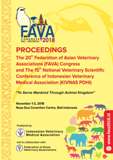PCS-5 Nitric Oxide Induced Basal Cell Hyperplasia and Lamina Propria Elongation in Rat Gastroesophageal Junction
Abstract
NO (Nitric Oxide) is an inorganic compound composed of nitrogen and oxygen, NO is also produced in various places on various types of mammalian cells. NO as a radical compound is important in mediating physiological and pathological events in mammals including humans [1].
GEJ (gastroesophageal junction) is a transition zone between the surface of esophagus which is covered by stratified squamous epithelium to the gastric mucosa which consists of simple columnar epithelium (z-line), where circular muscle of esophagus fuse with oblique muscle and lipid layer of the gaster. At the lower part of GEJ, there is the lower esophageal sphincter (LES) that not only allow food to move into stomach and works as an exit passage of the gas, but also inhibit reflux of any substances that potentially can cause harm to the esophagus [2].
Petersson et al, found that chronic exposure to cytotoxic levels of NO can cause inflammation, intestinal metaplasia and neoplasia. Although it is known that gastric acid, pepsin and bile acids can cause adenocarcinoma of distal esophagus and GEJ, NO exposure and nitrosative stress role in this phenomenon is yet to be fully understood and further study is needed [3].
The purpose of this was to identify and compare the histopathological changes occurring in GEJ in relation to administration of physiological concentration of nitrate dissolved in HCl and ascorbic acid. As such, the animal model used in this study can be used to study and represent the changes microscopically, because obtaining a full thickness biopsy from a human subject can be difficult to perform.

